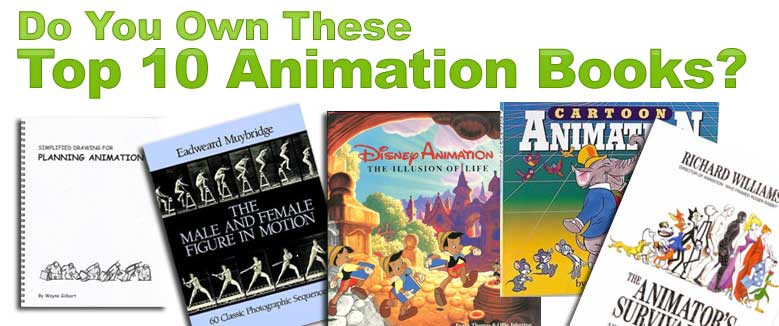
Top 10 Animation Books
Tweet
"Animation can explain whatever the mind of man can conceive." – Walt Disney
Have you ever found a book that you began to read which held your attention so much it was difficult to put down? Animators have! When an animator discovers a really good book about his craft they simply can't lay it down. The book speaks a language only they understand. The best animation books are the ones that you cannot put down. They are an elite group of books written by the founders of animation and only a handful of their students.
Reading alone does not make anyone an animator. But, having the history and knowledge of animation from individuals like Ollie Johnston and Frank Thomas at your finger tips is priceless. Those studying animation will quickly find they have committed themselves to a life long adventure of learning the art. Masters of any art form are life long learners. There are ten got to have books we will share with you today. One of these is referred to as the "Animation Bible."
Studying animation can be just as much fun as animating itself. True study always involves theory and hands on. Reading animation books is necessary for any experienced or aspiring animator if they want to grow in their profession. Think about this for a moment, the following books you are about to become acquainted with cover more than 75 years of animation history. How important do you think they are? The original Disney's nine old men are all dead now, along with many others like Art Babbitt, but their knowledge and legacy live on through film and books.
The Illusion of Life – Frank Thomas and Ollie Johnston
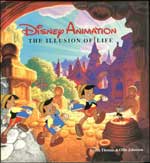 "Man always has had a compelling urge to make representations of the things he sees in the world around him. As he looks at the creatures that share his daily activities, he first tries to draw or sculpt or mold their forms in recognizable fashions. Then, when he becomes more skillful, he attempts to capture something of a creature's movements – a look, a leap, a struggle. And ultimately, he seeks to portray the very spirit of his subject. For some presumptuous reason, man feels the need to create something of his own that appears to be living, that has an inner strength, a vitality, a separate identity – something that speaks out with authority – a creation that gives the illusion of life." – Frank Thomas and Ollie Johnston
"Man always has had a compelling urge to make representations of the things he sees in the world around him. As he looks at the creatures that share his daily activities, he first tries to draw or sculpt or mold their forms in recognizable fashions. Then, when he becomes more skillful, he attempts to capture something of a creature's movements – a look, a leap, a struggle. And ultimately, he seeks to portray the very spirit of his subject. For some presumptuous reason, man feels the need to create something of his own that appears to be living, that has an inner strength, a vitality, a separate identity – something that speaks out with authority – a creation that gives the illusion of life." – Frank Thomas and Ollie Johnston
This book, called the animator's Bible, covers an incredible time period in animation history. It speaks about the early days of animation, the art form, the discoveries, created principles, and hard knock lessons. From story to character development, acting, and dialogue, The Illusion of Life will take every artist studying animation down through the corridors of time to where it all began. The term "rich" will not suffice the treasures in this book.
Animator's Survival Kit - Richard Williams
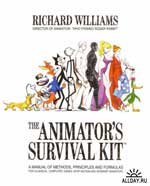 "While I was making The Little Island I had seen a re-release of Bambi, but since I'd considered myself a revolutionary in the field of animation, I'd rejected the film as conventional. But when I finished my film, I saw Bambi again and almost crawled out of the theatre on my hands and knees. "How did they ever do that?" I'd learned just enough to realize that I really didn't know anything." - Richard Williams
"While I was making The Little Island I had seen a re-release of Bambi, but since I'd considered myself a revolutionary in the field of animation, I'd rejected the film as conventional. But when I finished my film, I saw Bambi again and almost crawled out of the theatre on my hands and knees. "How did they ever do that?" I'd learned just enough to realize that I really didn't know anything." - Richard Williams
The Animator's Survival Kit is a thorough animation book written by Richard Williams, another product of the Golden Age Era. He studied the art form and learned from individuals like Art Babbitt and Ken Harris. As Director of Who Framed Roger Rabbit, Williams lays it all out on the line in this book. The book is a fascinating 342 pages long and covers everything imaginable about animation including directing animated films.
Cartoon Animation - Preston Blair
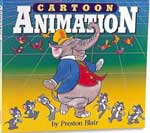 "An animator must consider a number of things when planning and creating animated movement. First, he or she must devise a plan for the action the character is supposed to perform. Once the plan is set, the actual movements of the character can be designed and rough sketches of the movements drawn. (At this stage, the animator should be well acquainted with the character so the movements will appear natural). Next, key (or "extreme") poses are drawn; then the key poses are used as guides to draw the in-between movements." - Preston Blair
"An animator must consider a number of things when planning and creating animated movement. First, he or she must devise a plan for the action the character is supposed to perform. Once the plan is set, the actual movements of the character can be designed and rough sketches of the movements drawn. (At this stage, the animator should be well acquainted with the character so the movements will appear natural). Next, key (or "extreme") poses are drawn; then the key poses are used as guides to draw the in-between movements." - Preston Blair
Preston Blair focuses on five areas in his book, character development, character movement, animation, dialogue, and technical topics as camera synchronization and sound. One can review his talent in the Sorcerer's Apprentice scene in Disney's classic film Fantasia. He animated Mickey. Preston Blair died in 1995 but he left a wealthy and vibrant masterpiece worthy of any animator's bookshelf.
Simplified Drawing for Planning Animation - Wayne Gilbert
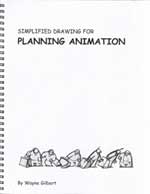 "When animating, always know the reason behind a character's movements. By showing the reason behind the way a character moves, you are showing the personality, emotion, and the result of what the character thinks – Acting. The entire body should reflect the emotion and psychology of the character… Simplified Drawing for Planning Animation is an approach to short-hand drawing that will make planning your animation easier and in turn can make animating much easier." - Wayne Gilbert
"When animating, always know the reason behind a character's movements. By showing the reason behind the way a character moves, you are showing the personality, emotion, and the result of what the character thinks – Acting. The entire body should reflect the emotion and psychology of the character… Simplified Drawing for Planning Animation is an approach to short-hand drawing that will make planning your animation easier and in turn can make animating much easier." - Wayne Gilbert
Wayne's book was written very uniquely. Its design has the aspiring animator to start from the back of the book and work toward the front. He reversed the chapters by starting with the finished product, what every beginner wants to create first, and then works back to the basic foundation elements of drawing shapes. Once at the end he has you work back to the beginning of the book – truly ingenious! Simplified Drawing for Planning Animation really puts the animator through a challenging boot-camp workout another must have in an animator's library.
The Male and Female Figure in Motion - Edward Muybridge
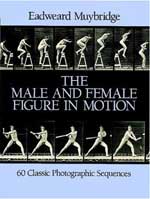 This book shows sixty photographic sequences of the human form in motion. Understanding body mechanics is extremely important when animating characters. Studying the human form in motion, as shown in The Male and Female Figure in Motion, will greatly increase an animator's understanding and aid him or her in the animation process. Creating walk cycles, run cycles, and action movement, as in sports, are all things an animator will have to be able to do at some point in their career.
This book shows sixty photographic sequences of the human form in motion. Understanding body mechanics is extremely important when animating characters. Studying the human form in motion, as shown in The Male and Female Figure in Motion, will greatly increase an animator's understanding and aid him or her in the animation process. Creating walk cycles, run cycles, and action movement, as in sports, are all things an animator will have to be able to do at some point in their career.
The remaining five books are just as important as the others. This article gave you a brief look into the top five picks for best animation reading. Now, go and discover what makes the rest must have books on the animator's bookshelf!
- Character Animation Crash Course! – Eric Goldberg (renown animator)
- Acting for Animators - Ed Hooks
- Timing for Animation - Harold Whitaker & John Halas
- Animation from Script to Screen - Shamus Culhane
- Inspired 3D Short Film Production - Pepe Valencia & Jeremy Cantor
Studying animation books is a part of the learning process. The information in them is invaluable to the animator. Some of these books listed here were created and inspired by the Animator's Bible that is how important having this information is. The following is from Simplified Drawing for Planning Animation by Wayne Gilbert,
"Spend half of your time planning your scene and the other half animating it." – Frank Thomas and Ollie Johnston, The Illusion of Life
So, my question to you is, "Do you own these top 10 animation books?"




